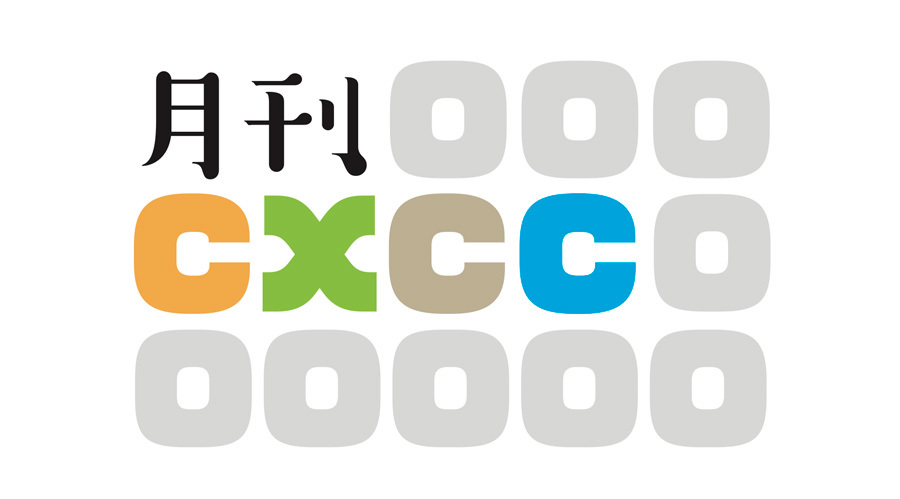Note: This website was automatically translated, so some terms or nuances may not be completely accurate.
How do inventors expand the CX domain?

Kosuke Takahashi

Monthly CX Editorial Department
Dentsu Inc.
How can Dentsu Inc.'s creative team contribute to designing CX (Customer Experience), which is increasingly demanded across various fields including advertising and marketing?
In this "Monthly CX" series, members of Dentsu Inc.'s specialized department, the CXCC (Customer Experience Creative Center), explore the role and potential of creativity in the CX field by delving into specific case studies. ( For more on Monthly CX, click here )
For the second installment, we focused on "Braille Neue," an award-winning, visually readable braille system developed within Dentsu Inc. We interviewed its creator, "inventor" Kosuke Takahashi, about "What is CX Creative?"
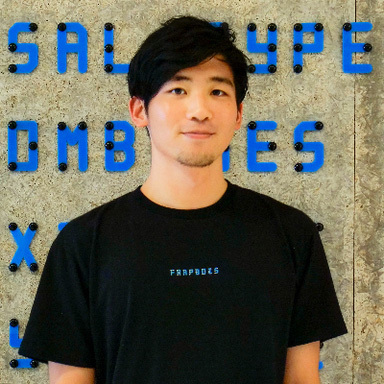
[Profile: Kosuke Takahashi]
Dentsu Inc. Customer Experience Creative Center
Born in Tokyo, raised in Akihabara. While creating interactive content and designing signage plans for public facilities, he also works as an inventor. His life's work involves pioneering new fields through inventions, such as "Braille Neue"—a typeface combining printed text and Braille—and "LINKAGE," a universal communication game based on tactile sign language. Major awards include the WIRED Audi INNOVATION AWARD, INDEX: Design Award, and TOKYO MIDTOWN AWARD.
【Braille Neue】
A universal typeface integrating ink characters readable by sight and Braille readable by touch
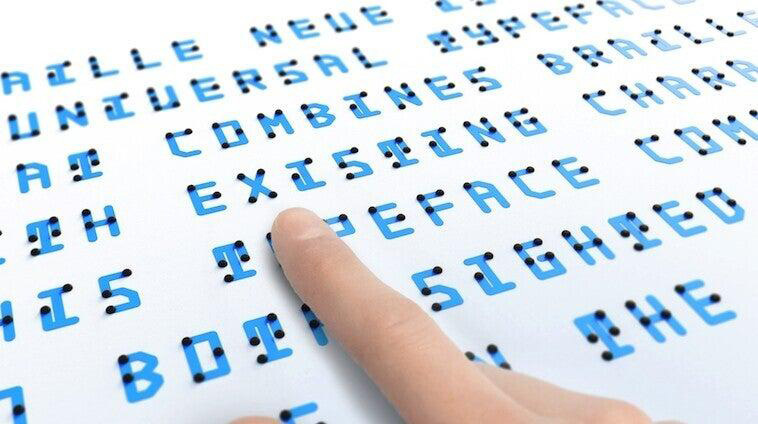

Invention begins with a small "That's interesting..."
Monthly CX: First, could you briefly tell us about the origins of "Braille Neue"?
Takahashi: I originally studied product design in university. We had many assignments related to social issues, so for me, "design" meant tackling those social challenges.
With that mindset, I joined Dentsu Inc. The first project I was invited to work on was "NIN_NIN," a shoulder-mounted robot born from the needs of people with visual impairments.
That experience led me to co-plan an event with a senior colleague where sighted and visually impaired people mingled. It was there I first saw a visually impaired friend actually reading Braille. Discovering things like "Oh, that's how Braille is read!" and "So that's how it works!" was eye-opening.
Monthly CX: It's true, I probably haven't witnessed firsthand how fast visually impaired people read Braille.
Takahashi: Braille is everywhere—at stations, around town—but you surprisingly rarely see people actually reading it. That really sparked my interest. I thought, "Braille is fascinating."
Then, that friend told me, "If you learn to read Braille, you'll be able to read books in the dark," which sparked my interest even more.
But trying to read Braille straight away is just too difficult. I thought it would be great to have something that could serve as a stepping stone into that world. That's how the idea was born: "Let's draw lines on Braille and turn it into something readable first." Braille Neue really started from something that was just like doodling.

Takahashi: When I proposed this to my senior, they said, "Let's try using this at an event." We actually used 3D printing to create the event logo and used it on the participant badges worn around the neck.
That's when I saw sighted people and visually impaired people conversing through it, and I realized this writing was becoming a "tool that connects people."
Monthly CX: A tool that connects people?
Takahashi: It means that using the same tool creates opportunities to meet people you've never interacted with before.
So I thought, "This might actually be meaningful..." and posted it on Twitter. We got responses from all sorts of places, so I started looking for someone who could help shape it into something tangible. That's how we met Shibuya Ward.
Monthly CX: So Shibuya Ward was the first partner.
Takahashi: When I went to present to the Mayor of Shibuya Ward, he immediately said, "This is great! Let's spread this from Shibuya to the world!" He introduced me to the Welfare Division right then and there, and that's how the rollout to Shibuya Ward facilities began.
Monthly CX: What a great start!
Takahashi: Of course, I'd talked with many companies before that, but it was hard to get things implemented. However, after it was implemented in Shibuya Ward, various companies started reaching out. Right now, we're connected with visually impaired staff at a certain pharmaceutical manufacturer and are working together to improve their signage plan (in-facility directional signage) using Braille Neue.
Monthly CX: Spreading through people with visual impairments is something unique to Braille Neue.
Takahashi: It's fascinating how something that started from curiosity—"Braille is interesting, it seems to have potential"—turned into a tool that itself became a catalyst for meeting people I'd never interacted with before. From there, connections spread to places I never imagined.
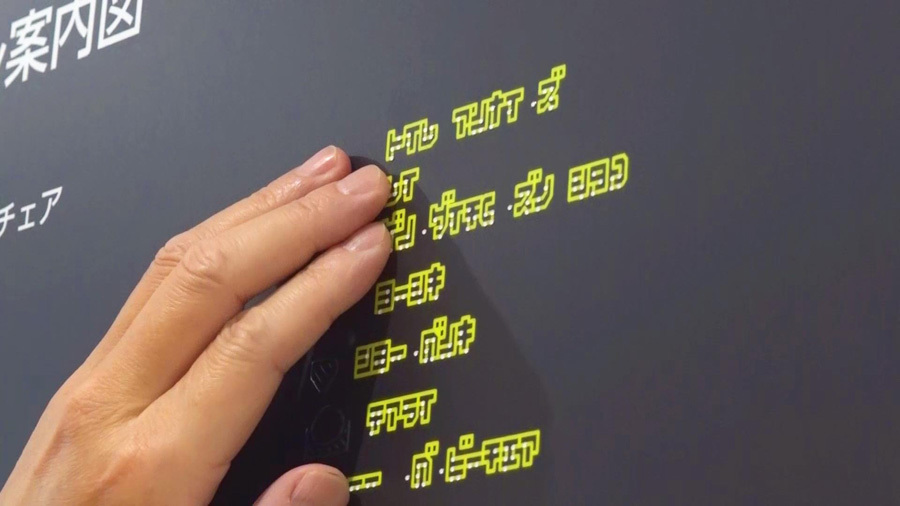
CX Creative is "something that can be close to each individual"
Monthly CX: This series explores the question "What is CX Creative?" through various case studies. Given that Braille Neue won Dentsu Inc. internal CX Award, how do you interpret the meaning of "CX Creative," Takahashi?
Takahashi: First, I remember thinking when I heard I was moving to the CX Creative Bureau, "That might make what I'm doing now easier."
Monthly CX: Oh, why is that?
Takahashi: CX Creative felt a bit more "close to people" than mass creative. Traditional mass advertising and digital ads had this image of being "one-to-many," targeting large groups.
If mass creative is about "let's entertain a lot of people," then I felt CX Creative could be a bit more about getting closer to each individual.
Monthly CX: So CX is about "being close to each individual, not just a large group." I see.
Takahashi: Yes. Take "turning people into fans" as one example—you can consider how each individual might react. Also, the methods are diverse and include things that can be more naturally integrated into daily life.
We've heard about "method-free" approaches (choosing communication methods freely and appropriately) before, but traditionally, mass advertising was the main focus, with digital often just a part of that. With CX creative, though, I feel there's a sense that it's okay to make the non-mass areas our main battlefield.
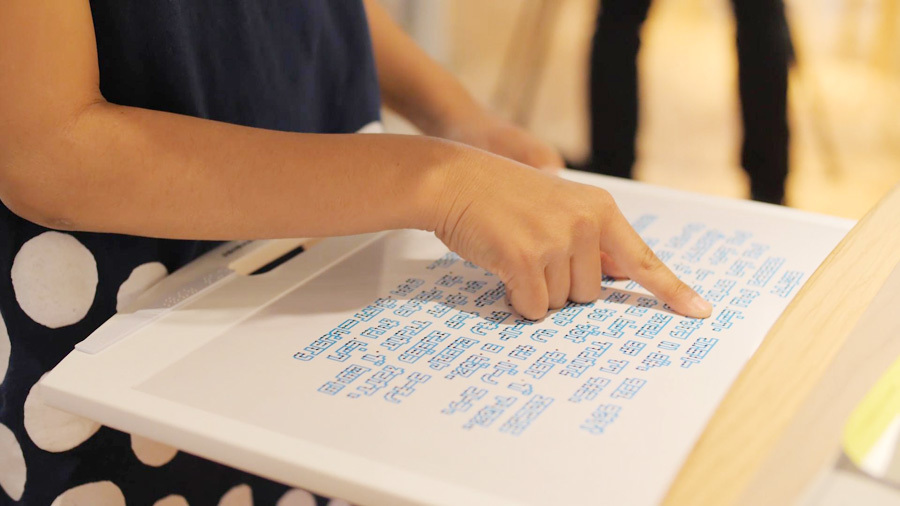
Monthly CX: What aspects of Braille Neue do you think are being recognized from a CX perspective?
Takahashi: I'm not entirely sure why it was recognized in the CX field this time, but if I had to say, Braille Neue is essentially a hack of the medium of text.
Monthly CX: A hack of the medium? In what way?
Takahashi: One aspect is its conceptual approach. It aimed not just for the information-transmission function inherent in the medium of text, but also to serve as a catalyst for communication.
By seamlessly uniting the text for sighted people with the text for the visually impaired, it became a design that creates unprecedented connections.
The other aspect is the "white space." When clients use Braille Neue, there's room for them to freely imagine "how should we use this?" While text is a tool commonly used for information transmission, adding this mechanism for communication transformed it into something that became commonplace in its own right. I think that's significant.
Monthly CX: Space for imagining how it could be used.
Takahashi: For example, a fashion brand approached us saying, "Let's collaborate with Braille Neue on clothing—let's create garments you can understand by touch." Braille had never been in the spotlight in the fashion industry before, so this represents a small but meaningful expansion of its domain.
Monthly CX: It's expanding.
Takahashi: I found it fascinating how people who'd never encountered it before started joining this trend.
For instance, I heard from visually impaired individuals who said things like, "I can't tell colors apart myself, so I mostly end up wearing monochrome clothes." They felt excluded from fashion. But of course, they also shared that "wearing a favorite outfit really lifts my spirits."
So just being able to describe what kind of clothes they're wearing is already a huge improvement, they told me.
When this kind of essence enters an industry that was previously only for sighted people, the market becomes a little bigger than before.
Monthly CX: People who were previously excluded are now entering the fashion mainstream. That's a clear "expansion of the field"! What exactly is written on those Braille Neue clothes?
Takahashi: Some have the brand name, and others have a poem about "light in the darkness." A friend who received one said, "Actually, it says this here," and showed it to various people, saying it became a conversation starter.
Monthly CX: What kind of reactions did you get from people who experienced Braille Neue in Shibuya Ward?
Takahashi: Yes, the best part was definitely "sighted people showing interest."
That's precisely what this typeface aims for: to be an entry point for sighted people to become interested in the world of the visually impaired.
Monthly CX: It's fascinating that by hacking Braille, which was meant for the visually impaired, sighted people react to it. It's a truly wonderful and mysterious situation where both visually impaired and sighted people can gain the same information from the same characters.
Takahashi: Rather than just expanding within the journey map in CX terms, I want to broaden the scope of what we mean by "customer."
Previously, inspired by "tactile sign language"—a communication method where you touch sign language with your hands to read it—which I learned about from a friend who is both blind and deaf, I created a finger-play game called "LINKAGE." That was also about expanding the domain.
【LINKAGE】
A simple game where you just connect your fingers with a stick, following the card's instructions, without letting them break apart.
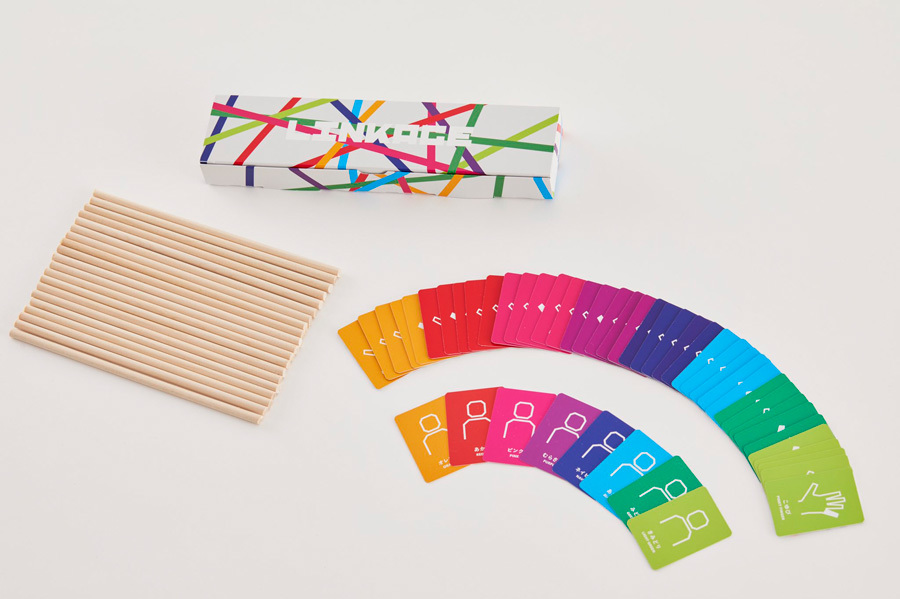
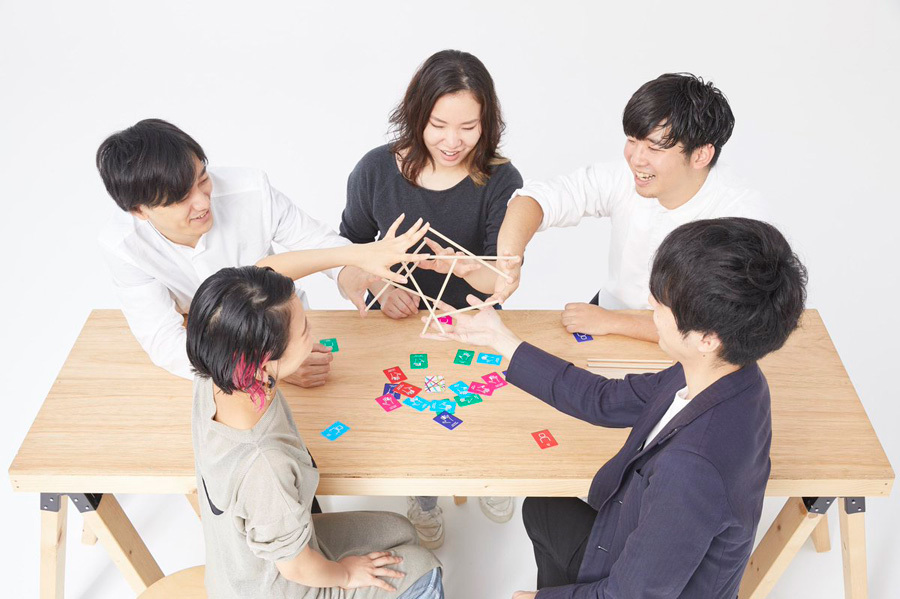
Monthly CX: What was that like?
Takahashi: Yes, it started from that initial thought I had when I first met my deaf-blind friend: "How do I even start a conversation?" I aimed to create something that would be like a buffer zone for getting to know strangers—a new space where both parties could mix together on equal footing.
Universal design is a wonderful concept, but sometimes it can feel like it implies a hierarchy, like "we're letting people with disabilities join in." Instead, I want to create rules that allow everyone to be on a level playing field.
The hint lies in human universality
Monthly CX: Indeed, both LINKAGE and Braille Neue create a middle ground—a world where both sides can enter on equal footing, rather than one side entering the other. Mr. Takahashi, you invent various things daily, not just around inclusive themes. Where do you start when trying to come up with ideas?
Takahashi: When creating things, my themes often revolve around facilitating smoother communication, like icebreakers.
Things like mechanisms that let you smoothly stand on the same level as someone you've never met before. I'm the type who ends up in a corner at parties thinking, "How do I start talking...?" So, I often start creating things because I really want that opening to start a conversation.
Monthly CX: So you often start from a place of "Let's create a new form of communication!" When inventions aren't communication-themed, what kind of thinking leads you to them?
Takahashi: I don't overthink it. I often start from an object-based perspective, thinking something like, "If only this were a little different..."
Maybe because I have a hacking mindset, I keep in mind that tweaking something existing tends to be more accepted than creating something entirely new.
For example, with CAPNUT—the architecture built from plastic bottle caps—the key idea was "plastic bottle caps are screws anyone can tighten."
【CAPNUT】
A project designing everyday items assembled using PET bottle caps—something everyone knows and can find anywhere.
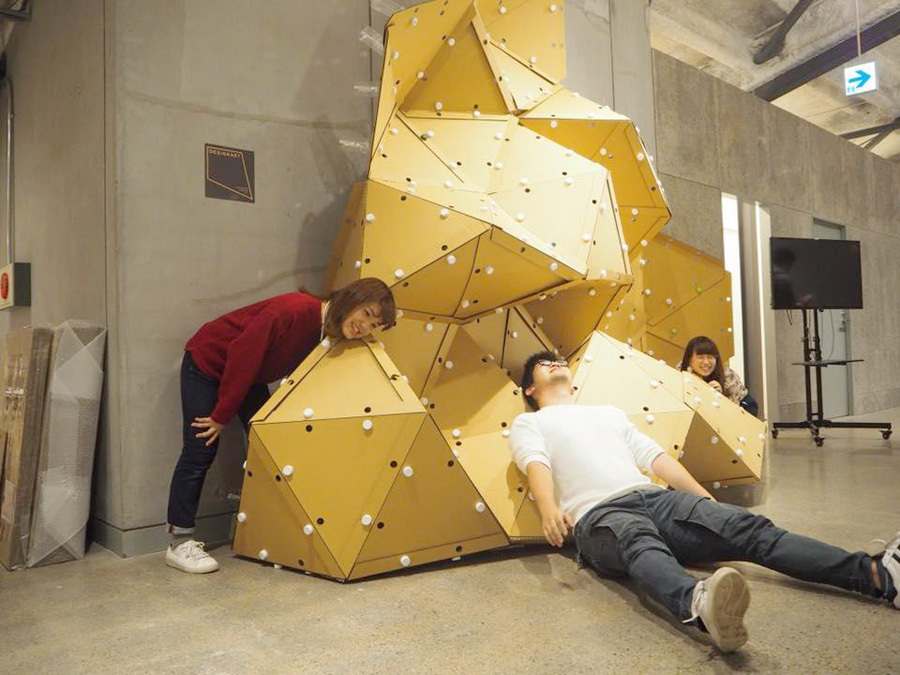
Monthly CX: So, anyone can tighten and unscrew a plastic bottle cap.
Takahashi: The UI of screwing this cap is universal worldwide, meaning anyone of any age can assemble it. And if you look closely, Coca-Cola bottles are sold everywhere in the world. These two "universalities," if you will. Discovering such universal human actions really propels the project forward.
Monthly CX: So these universals—human instincts or inherent properties of objects—are hidden within things. Rather than invention, there's first the joy of discovering them.
Takahashi: Exactly. Human behaviors we just can't help doing, or universal psychological traits—they're fascinating.
Looking back at the inventions I've done, I realize I've always found that aspect fascinating.
But I'm not overly focused on systematizing them; I think the methods for creating things will keep evolving too.
Monthly CX: When you use these extracted universal elements to create something, do you tend to make more useful things than things that make people laugh or are just funny?
Takahashi: Both, I suppose... If something's too serious, it becomes boring. So, the more useful something is, the more I consciously aim for it to have fun or interesting aspects. Conversely, the more ridiculous something is, the more I consciously aim for it to have practical aspects.
If something has universality, I think it'd be great if it could make the world a little better. So, when I find something interesting, I start researching related social issues. For example, Coca-Cola and McDonald's are accessible even in areas with slightly higher poverty rates. And then, "Huh, I didn't know that!"
Monthly CX: Using something like plastic bottles—which themselves generate ongoing environmental burdens—and steering them just a little toward the good also has real impact, right?
Takahashi: Yes. Also, just stockpiling universality can later connect to something interesting. When I share ideas like "Couldn't we use plastic bottle caps as screws?", clients sometimes catch fire and say, "If that's the case, maybe we could collaborate on something." I really love those moments too.
Monthly CX: Listening to you, Takahashi, makes the "customer" in CX feel broader than its usual meaning.
Takahashi: That's right. "Customer" isn't a great translation, is it? "Customer" or "purchaser" just has this unpleasant connotation.
Monthly CX: Is it because "customer" carries a strong impression of being "someone you get paid by"?
Since people who receive services for free are also called customers, I don't think it necessarily means only when money is involved.
Takahashi: I'm also involved in a project called "Challenge Lab," where I heard about "Japanese civic consciousness." The word "citizen" apparently carries the meaning of a "proactive" member of a collective. I hope the things I create contribute to increasing the number of people who take proactive, positive actions.
Not that I'm some super good person myself. (laughs)
I think it would be great to create something that brings out the conscience in others a little more. That's what I aspire to.
Monthly CX: So CX isn't Customer Experience, but Citizen Experience.
Takahashi: (Realizing for the first time that "Citizen" starts with C) Oh...! Yes, that's right, that's right! (laughs)
Monthly CX: That's fascinating. From media hacks and human universality to the definition of citizenship—thank you for such a wide-ranging conversation today!
Takahashi: Yes, thank you very much.
Was this article helpful?
Newsletter registration is here
We select and publish important news every day
For inquiries about this article
Back Numbers
Author

Kosuke Takahashi
After graduating from university, he worked at Dentsu Inc. As a planner, he handled projects such as interactive content production and signage plans for public facilities, while also pursuing inventions. His life's work involves inventions that create new human connections, such as "Braille Neue," a typeface combining ink characters with Braille. He was selected as one of Japan's 20 innovators at the WIRED Audi INNOVATION AWARD 2018. Left Dentsu Inc. in September 2022.

Monthly CX Editorial Department
Dentsu Inc.
CXCC (CX Creative Center)
The editorial team for "Monthly CX," a series where members of Dentsu Inc.'s CX-specialized division "CXCC" share insights on CX and creativity. By covering outstanding CX creative success stories within the agency or company, we unravel the essence and potential of CX creativity. Core members are Yoko Kibata, Hiroshi Koike, Nao Otani, Hirono Okumura, Yutaro Kosugi, Espin, Keisuke Saito, Kenji Oda, Hirozumi Takakusagi, and Motofumi Kanasaka, all belonging to CXCC.
